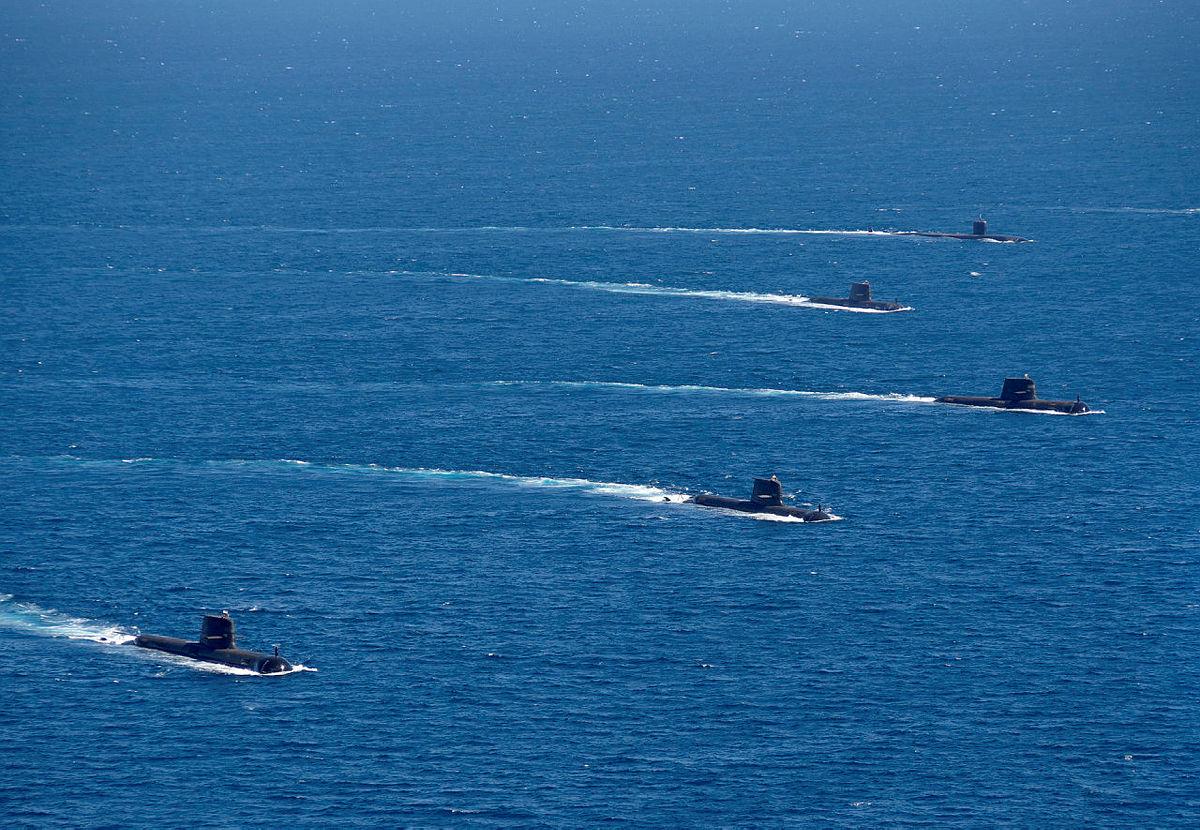Submarines: Your questions answered
Posted By Peter Jennings and James Goldrick on October 30, 2020 @ 12:30

Prime Minister John Howard famously coined the term ‘barbecue stopper’ to refer to a political controversy so hot that it was likely to make backyard diners stop mid-shrimp-sizzle to debate the big issue of the day. If ever the specialist world of defence procurement has produced a national barbecue stopper, it would be over the question of Australia’s future submarine. Why are they so expensive? Why do we need 12 of them? Why build them here? Why not nuclear propulsion? Why a French design? Why not an American, German, Japanese or Swedish design? Aren’t submarines obsolete, to be replaced by drones? Won’t technology make the oceans transparent?
There are many questions and few, if any, easily accessible, plain-English explanations. A forthcoming ASPI special report attempts to answer the many questions that Australians pose when it comes to the design, acquisition, cost, operational service and strategic implications of submarines. Our writing team includes a vice admiral and former chief of navy, two rear admirals—one a distinguished submariner who has served with the Royal Navy and the Royal Australian Navy; the other, one of Australia’s leading naval historians. Other contributors include people steeped in strategy and capability development and with deep industry experience of defence production.
Our hope is that the volume will become the go-to guide for authoritative comment on all things to do with the present and future of Australian submarines. A draft of this work was provided to key individuals in Defence and from industry to advise on factual matters. As with all our publications, ASPI retains complete control of editorial matters.
Submarines: Your questions answered will be launched on 4 November. The following chapter by former admiral James Goldrick on why we need submarines provides a taste of what’s to come.
Peter Jennings
What, exactly, do submarines do?
Submarines are the apex predators of maritime conflict. They deploy a variety of highly lethal weapons—usually without warning. Submarines can lay mines around enemy ports and in shipping channels. They can sink surface ships with torpedoes or with anti-ship missiles. They can fire missiles against land targets. And they can insert and recover special forces for reconnaissance missions or small-scale raids ashore. They can also act as intelligence gatherers, sitting off an adversary’s coast to listen for enemy movements and monitor the electromagnetic spectrum for enemy signal and sensor transmissions.
Submarines operate alone but play important roles in other maritime operations. They can conduct reconnaissance before a surface force enters an area, using their own sensors to confirm that it’s clear of adversary units and safe for the intended operation. They can act as a barrier past which the enemy must go to attack its key targets. They can provide advance warning of enemy movements when stationed off the adversary’s coast—not only of enemy ships but also of aircraft. Properly timed, their own attacks can not only weaken or even halt enemy operations outright but force the diversion of resources away from the enemy’s offensive operations.
It’s their ability to operate covertly that allows submarines to do those things. Because submarines remain underwater and because the oceans are a hugely complex and dynamic environment, the boats are very difficult to detect and almost as difficult to track once detected. Modern submarines almost always sail submerged, surfacing only to enter harbour. They rarely transmit on radio and almost never use active radar or sonar, which might reveal their own position. They’re most effective when they can access intelligence and sensor information from other sources, allowing them to position themselves to locate and destroy their targets. This is particularly important for diesel–electric propelled boats.
Nuclear-powered submarines have practically unlimited high-speed endurance and can reposition very quickly. By comparison, diesel–electric boats are slow—although they can achieve high underwater speeds for short periods—and must recharge their batteries at intervals, even when they have other ‘air independent’ propulsion for low-speed patrols. If they’re to transit, they must use noisier diesel engines for much of the time. This means operating near the surface with a ‘snorkel’ or ‘snort’ mast above the water, making them more open to detection. Once on station, however, they’re much less vulnerable.
Although some emerging technologies may increase the probabilities of detection underwater, they have yet to threaten the ability of modern, stealthy submarines to operate covertly. Modern submarines are designed to have the smallest possible signature across the acoustic spectrum, to the point where they’re effectively ‘silent’ at slow speed. This is the reason the great powers all operate ballistic missile carrying submarines as key elements of their nuclear deterrent forces—and why new generations of those boats are in development. And although unmanned vehicles present a significant emerging threat, submarines’ ability to deploy and recover their own autonomous vehicles will give them new options at reduced risk to themselves. Their potential as underwater killers remains high.
James Goldrick
Article printed from The Strategist: https://aspistrategist.ru
URL to article: /submarines-your-questions-answered/
Click here to print.